Engraved plates of materials, techniques and machines
used to craft turned ornamental products in the 1790s
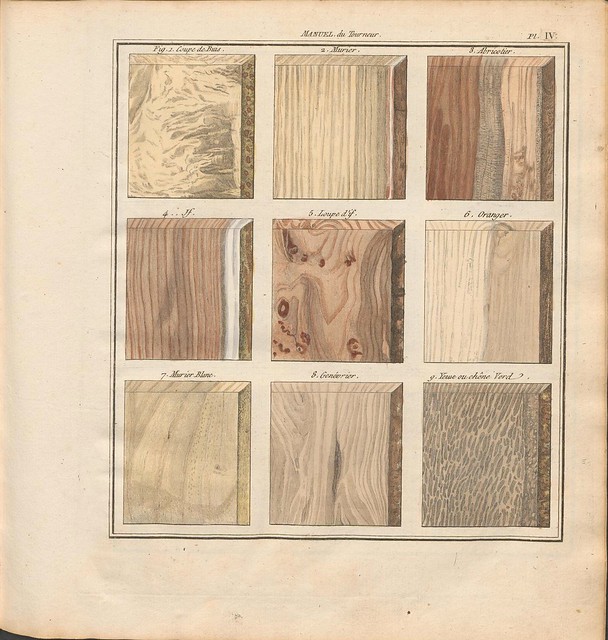

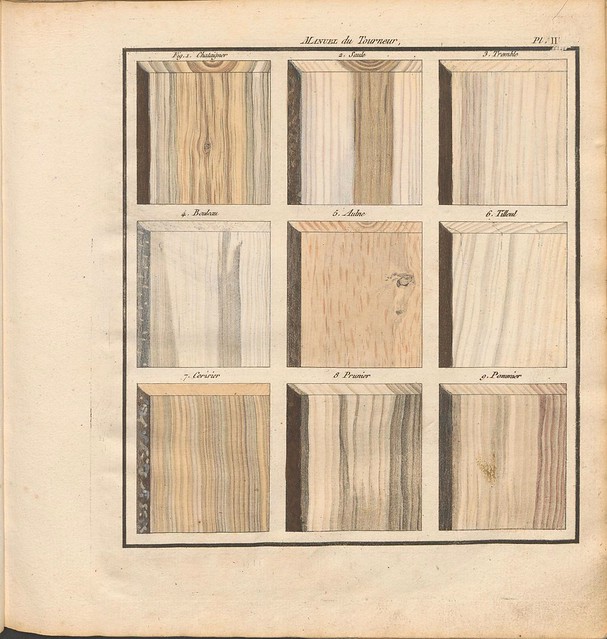
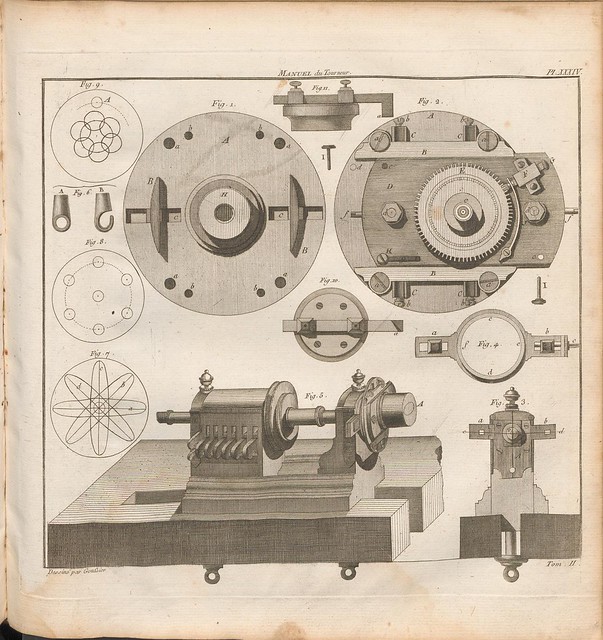
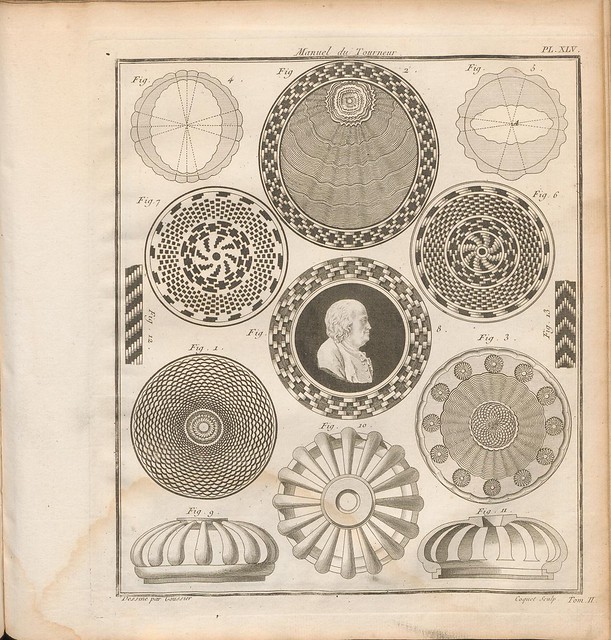
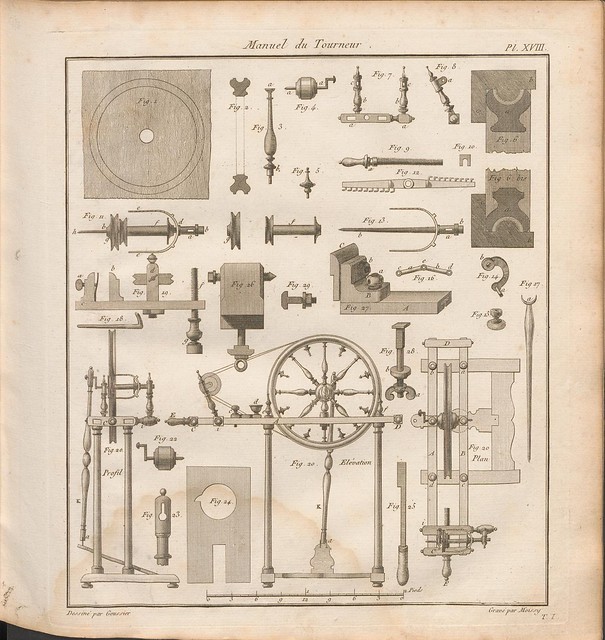
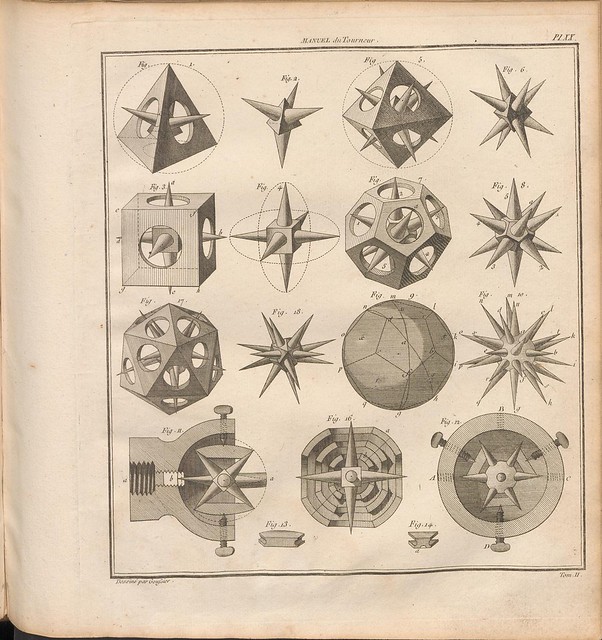
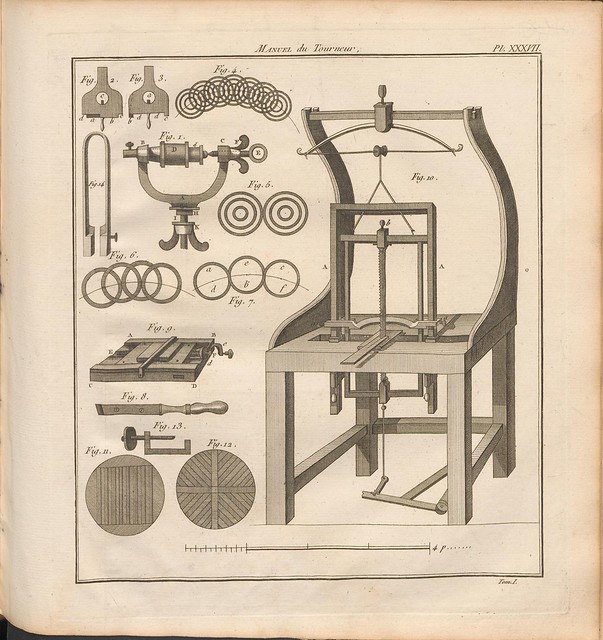

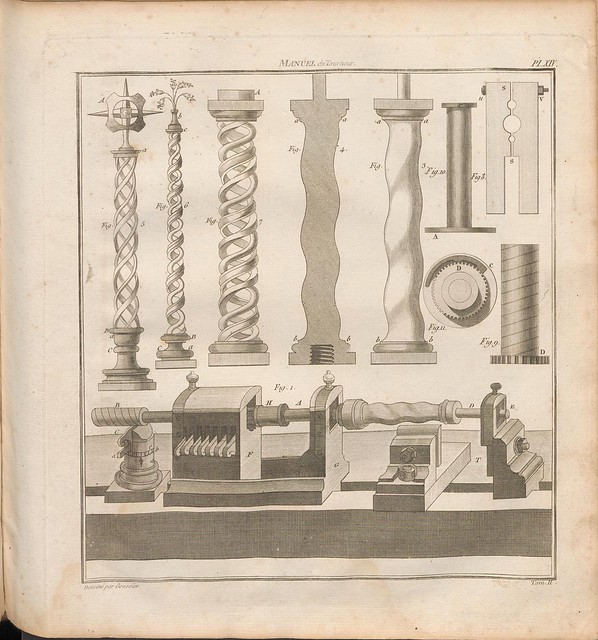

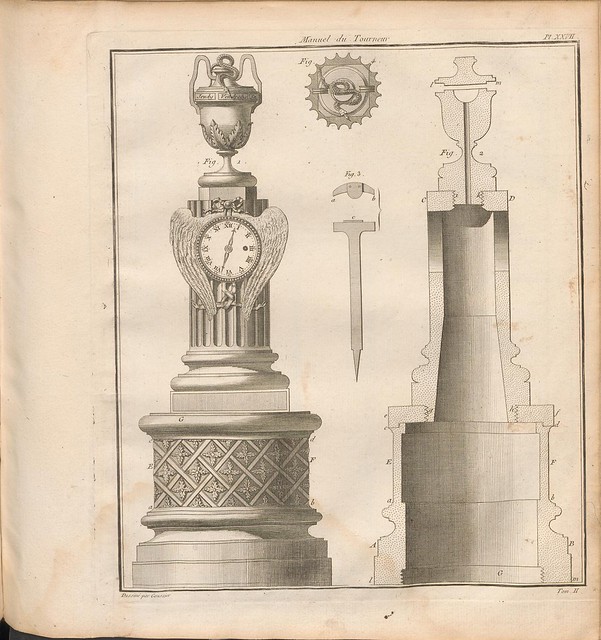

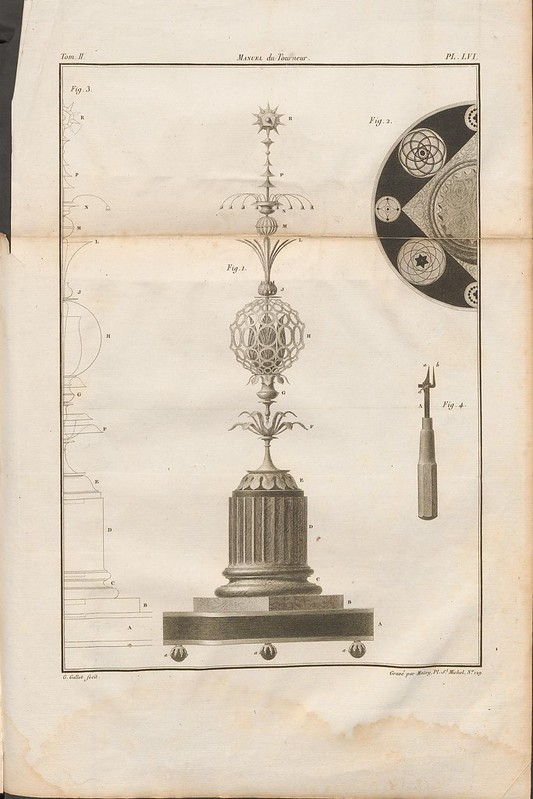
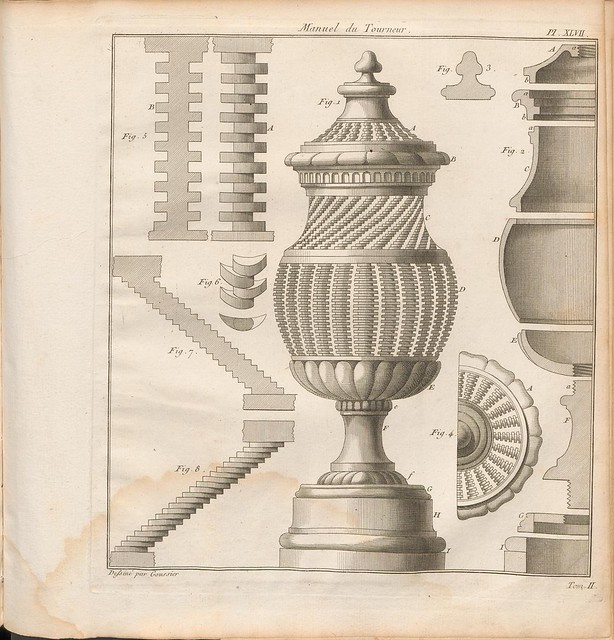

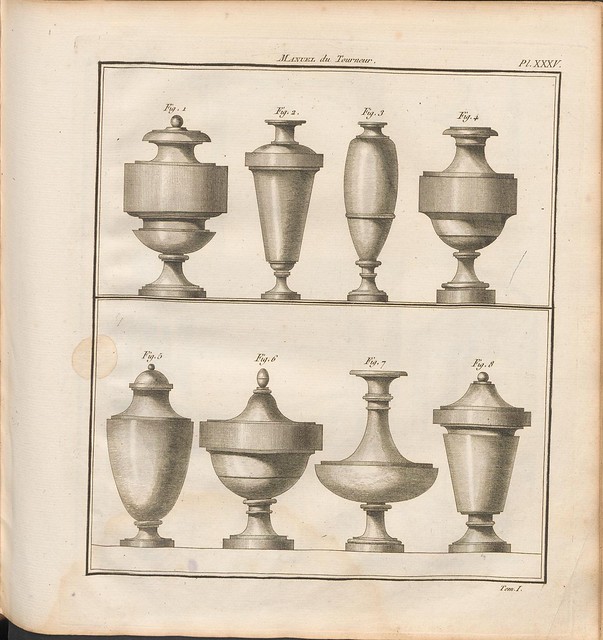
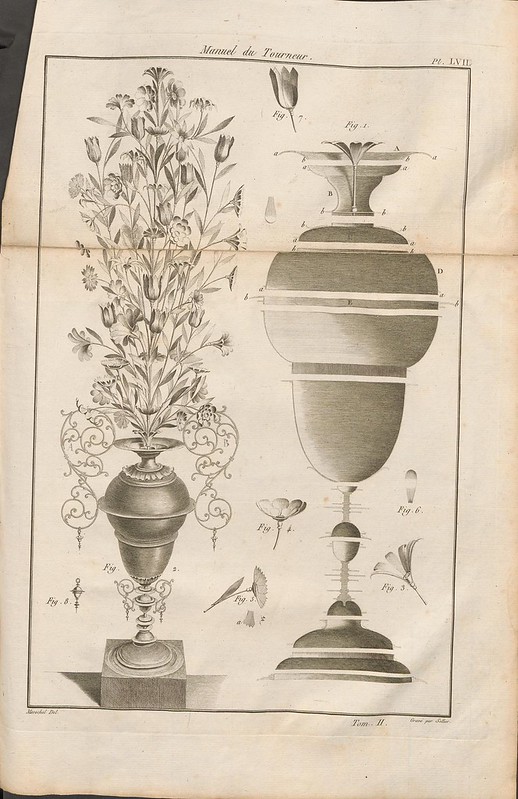
Ornamental (wood & metal) turning in late 18th century France was an art form most associated with the upper ranks of society and particularly the royal court. Publishing a how-to manual on turning under your own name in the 1790s against the backdrop of the French Revolution wouldn't have been the most sensible of life choices because the author's association with the hated aristocracy would be printed in black and white for all to see.
So the true author of The Turner's Manual - 'Manuel du Tourneur' - (the eminent lawyer, Louis Georges Isaac Salivet) decided against using his own name on the title pages of the first two volumes when they were released in 1792 and 1796, respectively (together making up the 1st edition).
Instead, Salivet employed two allonyms (like pseudonyms, but real people), Louis-Eloy Bergeron and his son-in-law, Pierre Hamelin-Bergeron, with whom Salivet was said to be at least acquainted, if not actual friends. There is no record as to whether or not the substitutes agreed to their names being used in this way. Citations online are divided between authors Salivet and Bergeron, but the latter probably dominates.
Salivet (or perhaps one of the Bergerons) was said to have owned a Paris firm "that sold rose engines, tools, lathes and materials for turning. This seminal work contains numerous engravings of various objects and patterns from which to model both turning equipment and turned objects." [source]
There appears to be only occasional commentary available online with respect to the technical qualities of the volumes. There are sparse references to its having merit in the first half of the 19th century both because it was an assiduous chronicle of continental development in the field of lathe-work and turning, and because there was no comparable literature available at the time in England (in fact, I don't think Salivet's Manual was fully translated** until just a few years ago). The 'Manuel du Tourneur' was specifically aimed at the amateur craftsman with the machines, models and techniques outlined relating to woodworking (most) and metalwork, with modest primers on glass engraving and ivory work.
A musical instrument journal article - predominantly a translation of text - about the flute and related instrument machining (illustration plate seen above) found inconsistencies in some of Salivet's descriptions and measurements. They conclude he wasn't a flautist himself, but very probably had obtained descriptions from (a) Parisian flute-maker(s), and he didn't have the background to adjust the information for context.
The revised 2nd edition of 'Manuel du Tourneur' (1816) was enlarged to include an atlas volume containing engravings by Nicolas Louis Rousseau from drawings by Gallet. The earlier edition had a smaller series of illustrations after designs by Louis-Jacques Goussier (known for his technical drawing contributions to Diderot's 'L'Encyclopédie' and illustration redesigns for 'Les Anatomies' by Vesalius). The atlas contains more than seventy regular and hand-coloured engravings in total.
**Just prior to posting this entry I found details about the 2010 translation of the Bergeron/Salivet 'Manuel du Tourneur' into English, and the following quote is found here (it's only mentioned at a couple of sites, both listed among the bullet points down below):
"The Society of Ornamental Turners has released in hardback a translation of Bergeron's 'Manual du Tourneur'. Volumes I and II are text only and contain no plates; the third volume often (called the 'Atlas') contains all the Plates referred to in Volumes I and II. Editor Jeremy Soulsby has translated the previously un-translated 239 pages as well as extensively revising the style and content of the earlier works so as to clarify obscure terminology and techniques. He has fully indexed the volume and provided a glossary and extended notes.
As described from the SOT website: 'First published during the turbulent times of the French Revolution, Bergeron's Manuel du Tourneur or The Turner's Manual has been admired for over two hundred years as a comprehensive record of all the tools, machinery and techniques required by an eighteenth century amateur wishing to establish a fully equipped workshop for the hobby of turning. This, the second volume of text which uses the 1816 revised and expanded second edition by P. Hamelin-Bergeron, is available for the first time in an English translation. It deals with the more elaborate elements of the subject and gives instruction in the use of the complex lathes of the period which were used to make many of the artefacts now to be seen in museums'."
- 'Manuel du Tourneur' is available online in full through the Swiss National Collaborative Libraries host portal, e-rara. [note the links lower left to each of the three volumes; thumbnail page views are available]
- Woodworker's Manuals 1900 and Before.
- Books on Ornamental Turning from *Ornamental Turning - The online resource for "OT" enthusiasts*.
- Bergeron at Circuitousroot (commentary on the article below & web edition listings).
- Bergeron book translation listing at The Society of Ornamental Turners - contains more information and sample pages {SOT homepage}.
- 'Bergeron on Flute-Making' by Michael Wright IN: The Galpin Society Journal (Vol 29. May 1976. pp. 26-34).
- Amazon listings for Salivet publications.
- Previously: The Wood Book and, more generally: Machines.
- Thanks John!
- This post first appeared on the BibliOdyssey website.



















No comments :
Post a Comment
Comments are all moderated so don't waste your time spamming: they will never show up.
If you include ANY links that aren't pertinent to the blog post or discussion they will be deleted and a rash will break out in your underwear.
Also: please play the ball and not the person.
Note: only a member of this blog may post a comment.